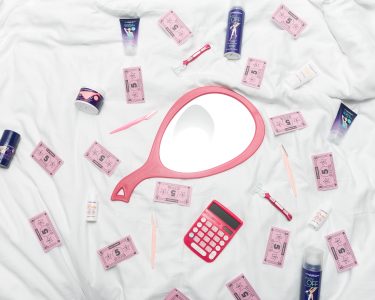Widgetized Section
Go to Admin » Appearance » Widgets » and move Gabfire Widget: Social into that MastheadOverlay zone
The Pink Tax
The views expressed are those of the author and do not necessarily reflect the views of ASPA as an organization.
By Antonio R. Renteria
June 26, 2023

What is the pink tax? There are a few notable definitions on the internet.
Firstly, the pink tax is defined as any additional amount of money that women pay for certain products or services that are identical or similar to those used by men (Longley, Robert 2021). These items are often represented by personal care products including razors, shaving creams, deodorants, hair care products; but also, service products such as dry cleaning, haircuts or in haggling situations such as when purchasing a car. The word “tax” used when describing this version of the pink tax is meant to be metaphorical: not a literal government-imposed tax, but upcharges to products and services most often marketed for women.
A second definition of the pink tax, sometimes called the menstrual or period tax, refers to state sales tax on menstrual products, like tampons, and feminine pads. This is a literal tax which is levied on the purchasers of these products, most often women (Park, Allyson 2022). I would also add to this definition any and all taxes collected on prenatal and neonatal products.
While not every woman may currently, or ever, deal with the added costs of the second definition, even I have noticed the discrepancy when shopping for my shampoo versus my partner’s shampoo. Marketing will tell you that one product is better for this reason or another, but, in reality, most products aren’t all that different in manufacturing costs behind the wall of advertisements and product labeling (Schmidt, Brie 2023).
Now, there are laws that act against the first definition in the State of California and New York (the only ones, thus far), so as to protect consumer interests, but the differences in gendered product pricing is still more centered on consumer behaviors than the manufacturing costs themselves. Realistically, a product need only have a few additional features in order to be clear of most consumer protections.
Spray-on vs. roll-on deodorant is a good example of this. I have noticed more roll-on kinds of deodorant are marketed towards men with a few options for spray-on. And spray-on deodorants marketed towards women are increasingly numerous while roll-on options seem to hold less prevalence. Which kind is more often most expensive? While we may be able to guess that synthesizing and bottling spray-on deodorant may be more costly than however a deodorant stick is manufactured, we could also surmise that the spray bottles are lighter and much thinner than their roll-on counterpart, making those products cheaper to transport than similar ones.
This is all to say that the intended target consumer for these products, women, mostly, will, on average, pay more each year for similar products and services than those who do not buy these products. It would be overly simplistic to suggest that folks just outright boycott gender coded items, as many have grown to rely on them as necessities, be they personal, professional or otherwise. Instead, we could choose to support one another by holding up a mirror to product marketing and asking them to describe the differences in these similar products which require such different price points to begin with. Or, in other words, ask, “why do the pink ones cost so much?”
For current figures on this topic, please see The Pink Tax: Latest Updates and Statistics | Bankrate
Author: Antonio R. Renteria has served as the Civil Rights Coordinator and Diversity, Equity, and Inclusion Officer at the Mendocino County Department of Social Services in January of 2022. Antonio graduated with a master’s degree in public administration from Sonoma State University in 2019, and with a degree in Political Science from the University of Notre Dame, du Lac in 2013. Antonio was born and raised in Mendocino County and takes great pride in returning to serve the very community that gave him so much.
Antonio Renteria
Senior Department Analyst, DEI&B Coordinator
Mendocino County Department of Social Services


 (2 votes, average: 4.50 out of 5)
(2 votes, average: 4.50 out of 5)
James A Nordin
July 3, 2023 at 5:59 pm
Antonio,
My man! Loved your article and loved that you’re writing!
We should talk